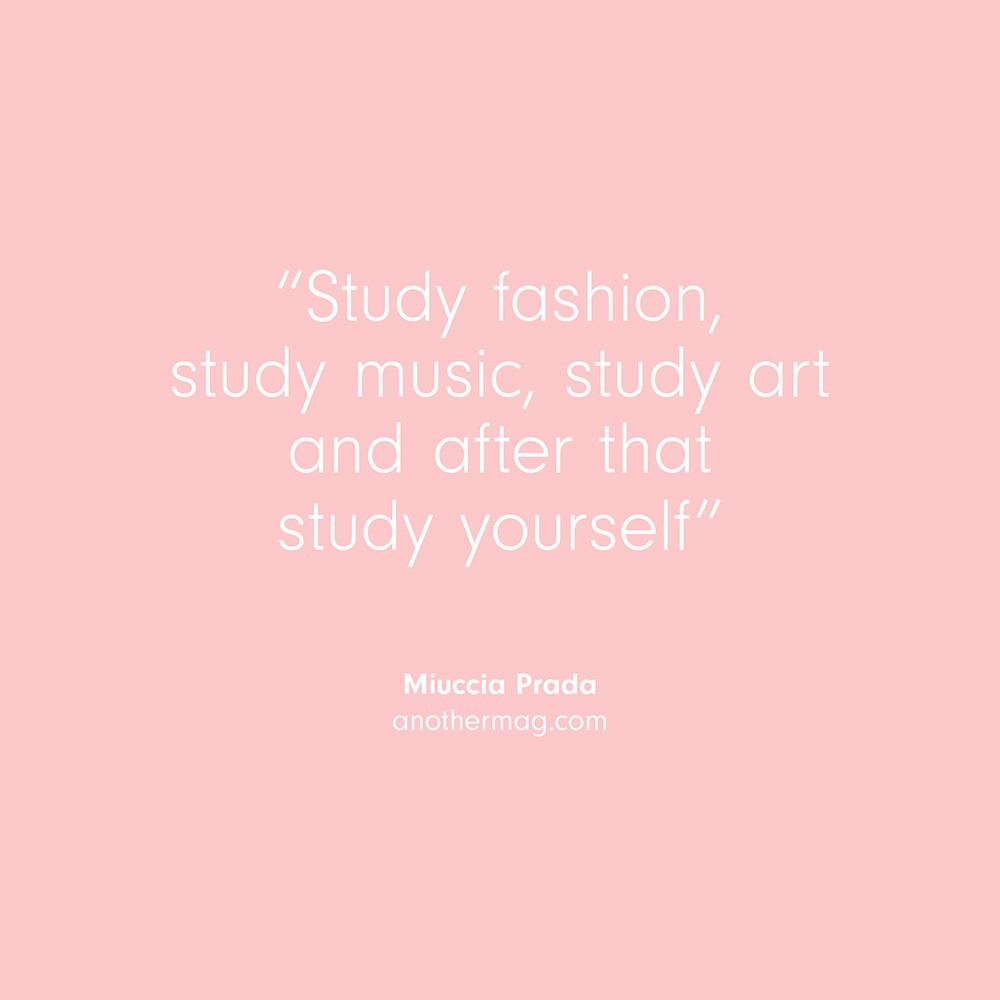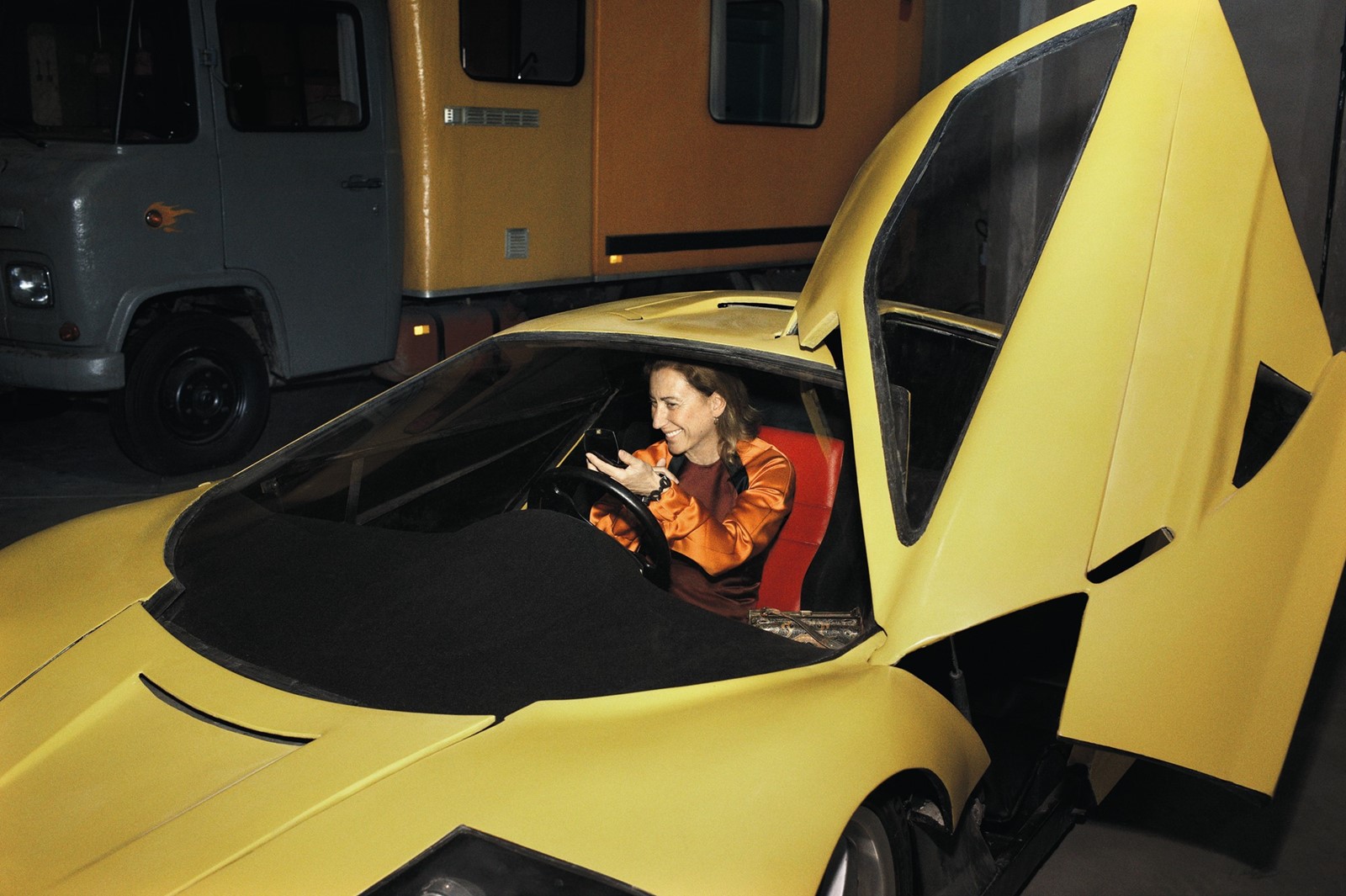For 15 years, the Prada Foundation has championed contemporary art through its innovative commissioning, exhibition and publishing programme. Soon, its private collection – including seminal works by Damien Hirst, Sarah Lucas and Jeff Koons – will be relocated to a 17,500 square metre new home south of Milan, built by long-time Prada collaborator Rem Koolhaas. Miuccia Prada invited AnOther Magazine to take a rare look inside the Foundation warehouse space, and spoke to co-curator of London’s Serpentine gallery, Hans Ulrich Obrist, about her unique relationship with art.
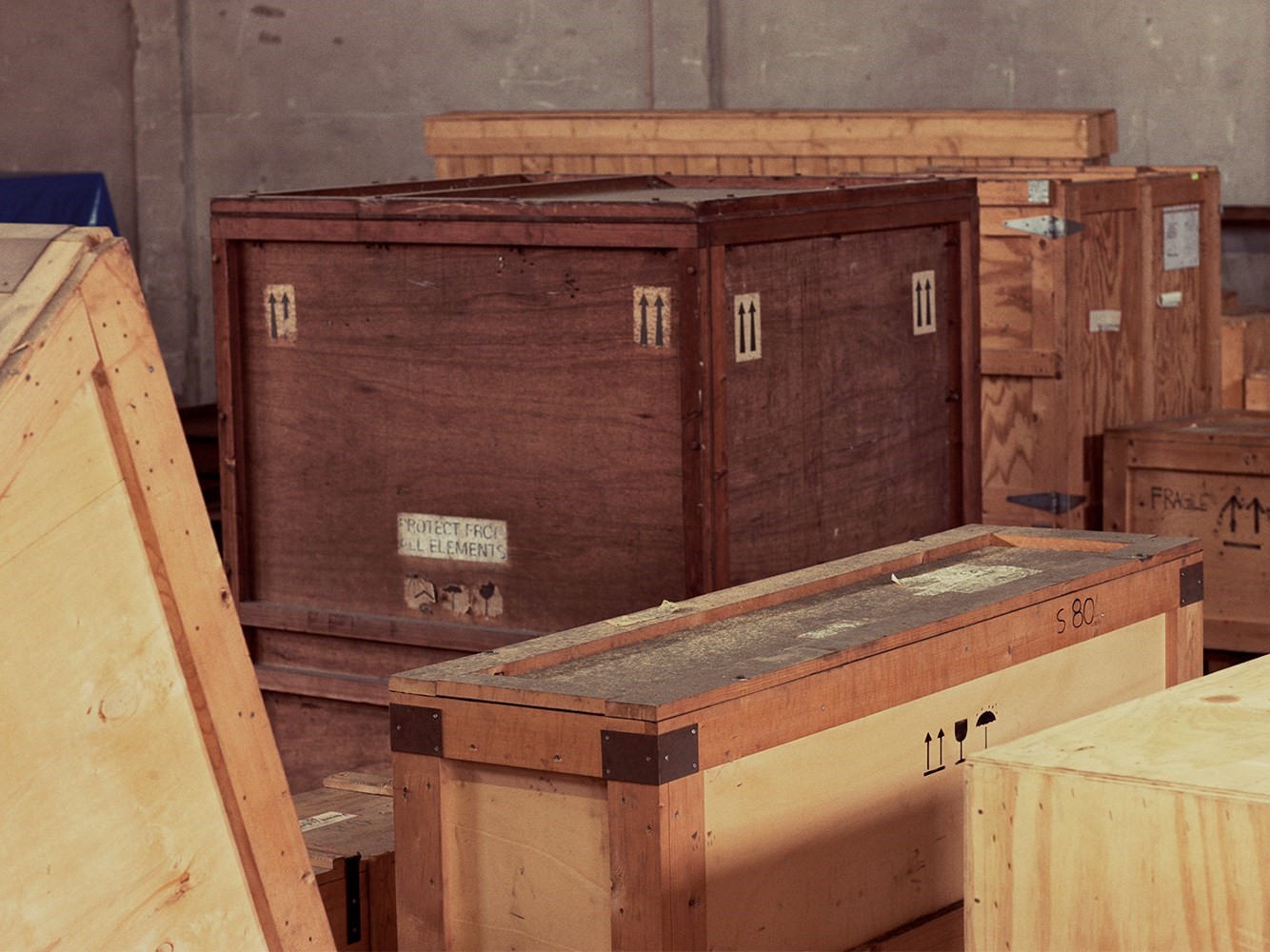
Reminiscent of a great opening act, my introduction to Miuccia Prada was rather unorthodox. It happened ten years ago during the first Berlin Biennale – which I co-curated with Klaus Biesenbach and Nancy Spector. We were meandering around when we came across one of Carsten Hööller’s giant slides. She handed me her handbag and jumped straight on, that’s how we met for the first time. I spent the rest of the evening trying to find her to return her bag. I always thought that was a fascinating first meeting. Miuccia’s engagement with art is not confined to a mere gaze in an exhibition space, but is omnipresent in her life and even her workspace; one of Hööller’s slides connects her office to the car park, affirming the way she relates to art: passionately and spontaneously. Throughout the years I have known Miuccia, we have had many meetings and multiple conversations, which, in a Picabia way, diverged into numerous other directions: art, architecture, literature, science, Black Mountain College. However, despite their multidimensional quality, these conversations, just like superstring theory, were somehow interconnected; a trialogue between Rem Koolhaas, Miuccia Prada and myself. I am very thankful to Another Magazine for catalysing this conversation, my first recorded interview with Miuccia. As Douglas Gordon would say – it has only just begun.
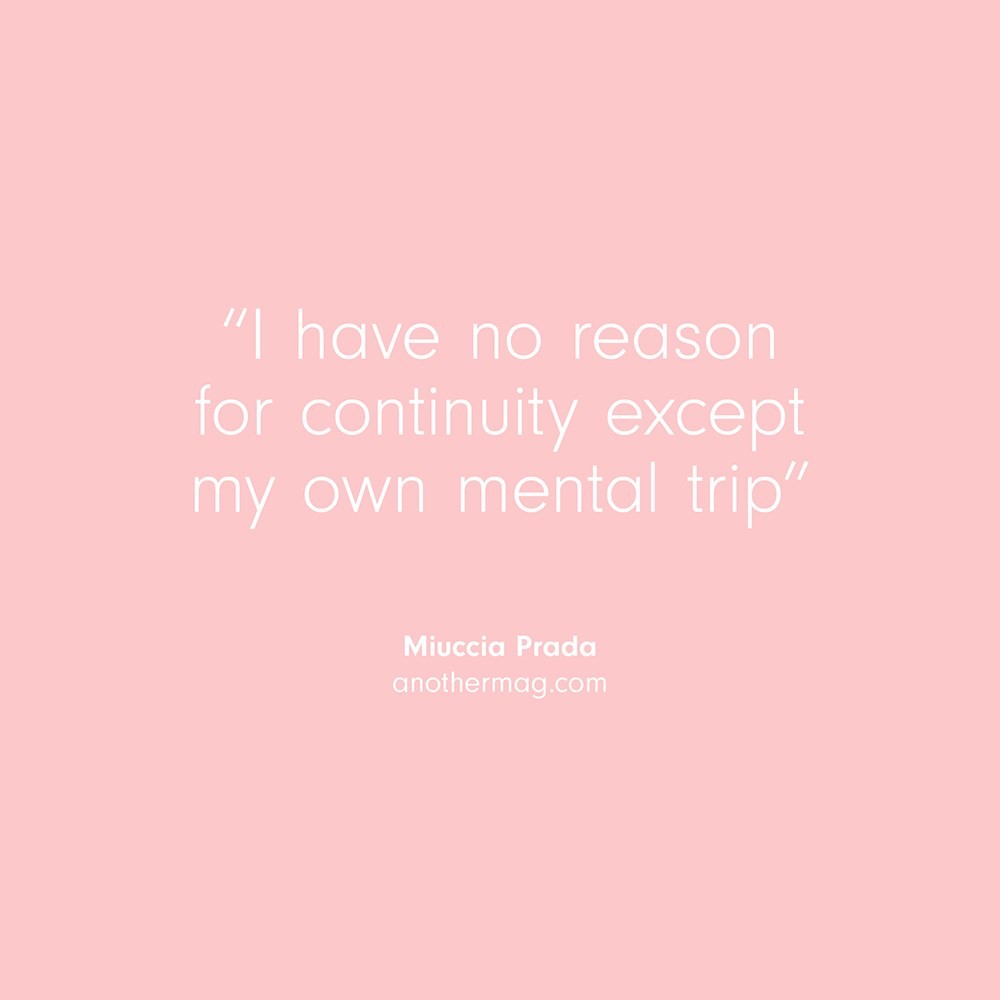
Hans Ulrich Obrist: It must have been 1987, Fischli/Weiss started to tell me about your work...
Miuccia Prada: That was really the beginning. It was in the 1980s that you went from local to global. It happened very quickly. I was doing probably the opposite of what was out there at the time. There was a moment where no one liked my work because the people who were trendy, they didn’t find what I was doing trendy enough; for the people who were more classic, it was something that they didn’t really understand. I’m always interested in the thing that’s not clear.
So one could almost say that you are looking for ambiguity. That ambiguity is a quality?
Yes, but it’s a quality that not many people like. People like things that are very clear and simple, the moment you become complicated or more subtle, there comes an uneasiness.
That ambiguity is now not so much your trademark, but your umbilical cord or your link. Who have been your heroes? Who has inspired you?
I would say that I change heroes every six months depending on what I’m interested in. For instance, last season I found myself looking at the work of Capucci, I don’t know why Capucci came to my mind. So for a few months I’m obsessively looking at the work of somebody without any particular reason. I think what’s moved my imagination, what has influenced me the most in the past have been movies.
And can you give some example of movies that have been particularly important?
So many movies, from B-movies to Antonioni... I would say that I go into obsessions for a few months, and after that another one and then another one.
The French artist Francis Picabia said that our head is round-shaped because it allows us to change directions. So maybe there is a Picabia dimension in that.
Yes, definitely. I have no reason for continuity except my own mental trip. Very often I start working on a subject that I never liked, mainly because what I know I used to like is too obvious for me. I always want to investigate fields that are not my typical ones. For instance, this year with the lace, it was such a scary material. But if I do lace, I have to do everything about lace, because whereas before you could be more subtle, today everything has become more quick and much more superficial in a way. There is a growing sense that you have to constantly change and impress.

In our previous conversations we mostly spoke about art and how art plays such a big role in your life. You have these friendships with artists; you have a very strong proximity to art. Is that something which you already had in the 80s? I mean were artists like Warhol an inspiration?
I think it was just an instinct. My liking for art was more historical, more scholastic at the time. I was more interested in theatre, movies, dance. So I was not following art in the 80s.
You collected artists like Damien Hirst and Carsten Höller very early. They weren’t yet famous international artists. You don’t wait for a thing to be confirmed by anyone else.
No. Actually I even go against people’s comments. In the end, when what I do works, it is when I follow this strange internal logic... I definitely follow a kind of interior path.
In our conversations we’ve talked a lot about art, but also about politics. When you started out you said maybe you wanted to become a politician. So I was wondering if that was ever something that was of interest – this idea that politics could enter fashion – or for you was it more about parallel realities?
No, no, no... It has to be considered from many different points of view. One point is that politics is always something that is very serious, either you do it or you don’t do it, and to be just an opinionist – I hate that. To be an opinionist as a rich fashion designer, I think is the worst possible thing to be! (Laughs)
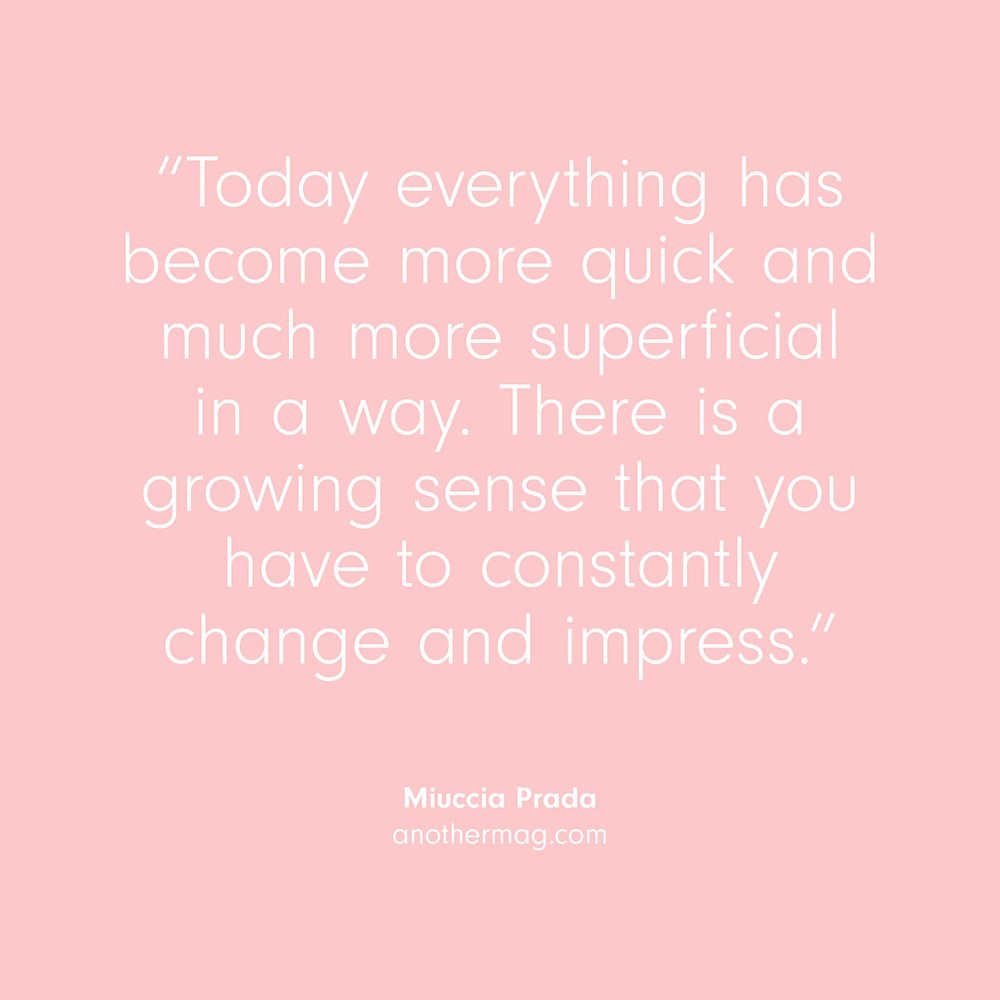
There was a moment in the 1910s and 20s in the Russian avant garde when political propaganda became complex. It was the idea that art would really go into all the aspects of life. Fashion was very politicised.
I think we are in such a different moment now; it was a very elite and small world then. They didn’t have to face the reality of thousands of people. Today, if you declare you want your dress to be political you would be killed the next day. It’s not a small world of an elite any more – now you have to really face people, and people all over the world. I would be very careful in criticising people because what you have to face now is so many cultures. One should not be so superficial any more.
When I started in the art world in the 80s it was still very much about the west. Ever since the 80s, it was, and is, key to create more awareness for non-western art: China, India, the Middle East. I was wondering if that affected you, if in a way you had inspirations or contact zones with non-western influences?
The 60s in Latin America were amazing – that is my favourite period. The art of that place in the 60s was incredible, and in the 80s in China, a big movement. I started visiting China in the 70s and South America, so, of course, when you work you are influenced by what you see, but it was never the point of going to those places. I never wanted to do a show that was 'ethnic'. I hated that actually – I always wanted to be European. As an instinct I want to keep it separate, even though I don’t know why and maybe it’s not right. Mainly in my work, I don’t want to be influenced. I never looked to art, was never arty, I don’t know why, but I always wanted to keep it separate.
So you never did what many fashion designers did and ask artists to do fabric for the dresses.
I don’t like it. If I saw a possibility of something great and new I would do it, but to ask to do something with someone for the sake of doing something together, I don’t see the point. And I think that since Dalí and Elsa Schiaparelli nothing really meaningful has happened, maybe Vivienne Westwood with music. That was the last collaboration that was something relevant and original.
It happened out of her life somehow.
Yes, but I think it influenced a lot of her work, at least from the outside and maybe only superficially. If I have to think of a collaboration that looked like having some sense, that one made sense to me.
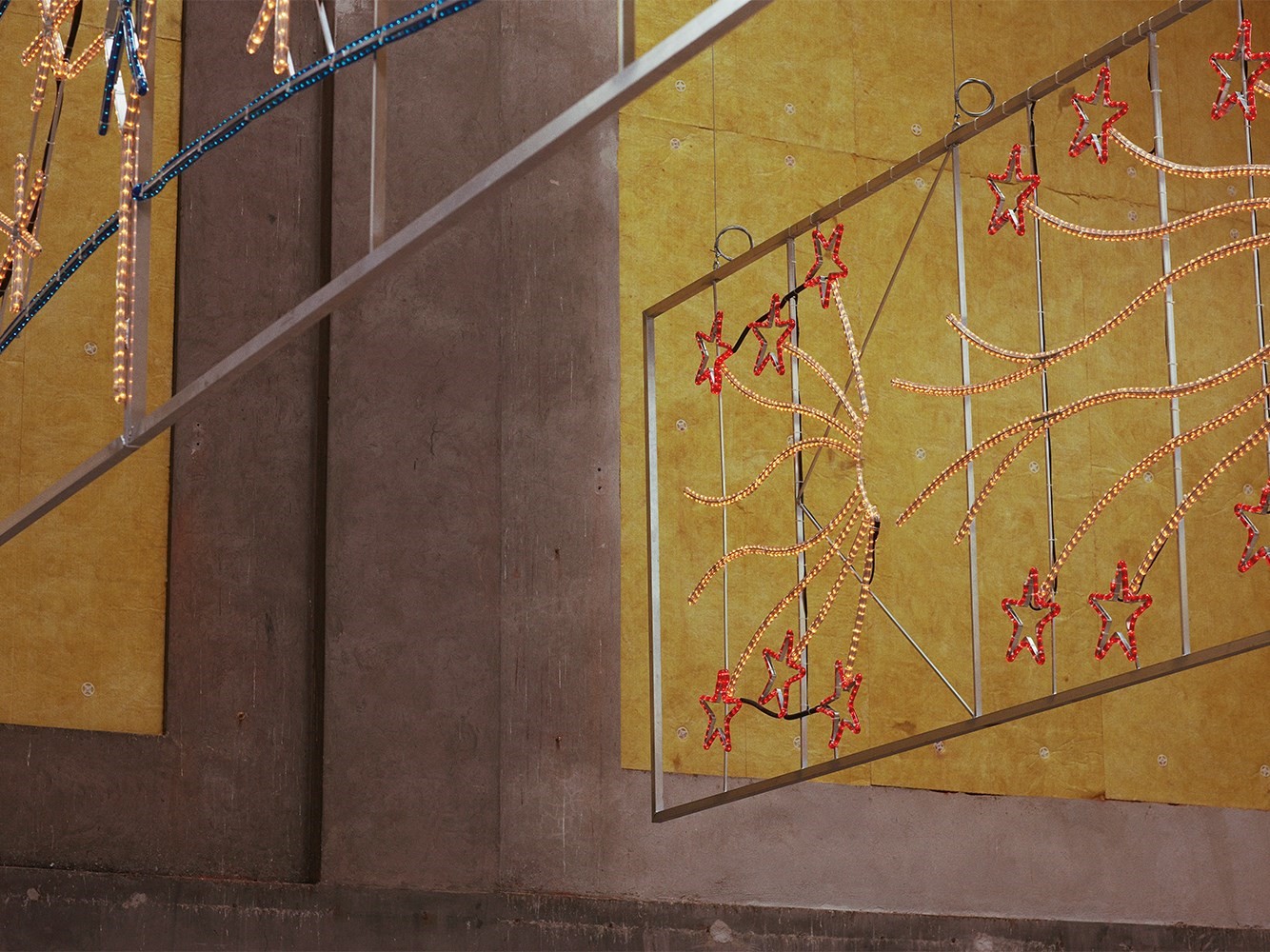
What’s the role of the shop?
The shop is a much more difficult subject because to do one opening is fine, but to have control over more than 200 stores around the world, where not only do you have to represent your ideas, but also you have to sell them, is much more complicated. But it’s where I would like to put more energy.
Very interesting. So Vivienne Westwood is important for you?
Yes. Yes, I do think without her we wouldn’t have seen the success of the Japanese designers. I think she is great and a real novelty.
So you think Vivienne Westwood was even a trigger for Comme des Garçons, for Miyake? I never thought about that.
From my point of view she was, yes.
We haven’t spoken yet about the shows. I’m very interested in this idea of the fashion show. How much do you see them as a medium of your practice?
At the beginning – because in the 80s I think there were a lot of theatrical shows in Paris and so on – I just wanted to focus on clothes. Pure clothes with zero extra intervention. Now, probably in the last four years, I think I’m going back to theatre. I used only to care about my clothes, but now I realise that the rest is also fundamental. I’m not saying even more fundamental than the clothes, but as I said before, what you need is impact. It’s very important. Of course, I focus a lot of my attention on the smallest detail...
It’s a bit like the fashion show is for you what the exhibition is in the art field.
Yes.
So obviously one extreme and incredibly interesting example of how the store can become more theatrical is your store in New York; it’s a stage, a performance space.
That’s a perfect example of what people want today, because it is theatrical. It’s impressive.

So, there might be more of that?
It should be more like that.
I was wondering about the role of books in your practice for fashion and also for art because whenever I visit you, you have these tables full of books, and you also produce books.
At home I am submerged.
When I was at your home I saw all these tables piled up with...
What I would say is the most difficult thing for me at the moment is to decide which book to read. So I always have about 20 that I am reading and I go back and forth... also there are tonnes of magazines.
So it’s almost a flood.
Yes. (Laughs)
Incredible quantities! But what are your favourite books? Are there books you read again and again?
I would say that the base of my culture was the great literature of the 18th and 19th centuries. Russian, French, German and Japanese literature. And after you read Stendhal or Rousseau, it’s difficult to find contemporary books interesting. What I do think are very interesting sometimes are articles in magazines and the interviews and essays at the beginning of art books. I am probably one of the few who don’t look at the images, but reads the introduction. Very often in good magazines there is a lot to read – also you have to read newspapers, you have to read all kinds of political magazines. So it’s...
A big mix.
(Miuccia laughs)
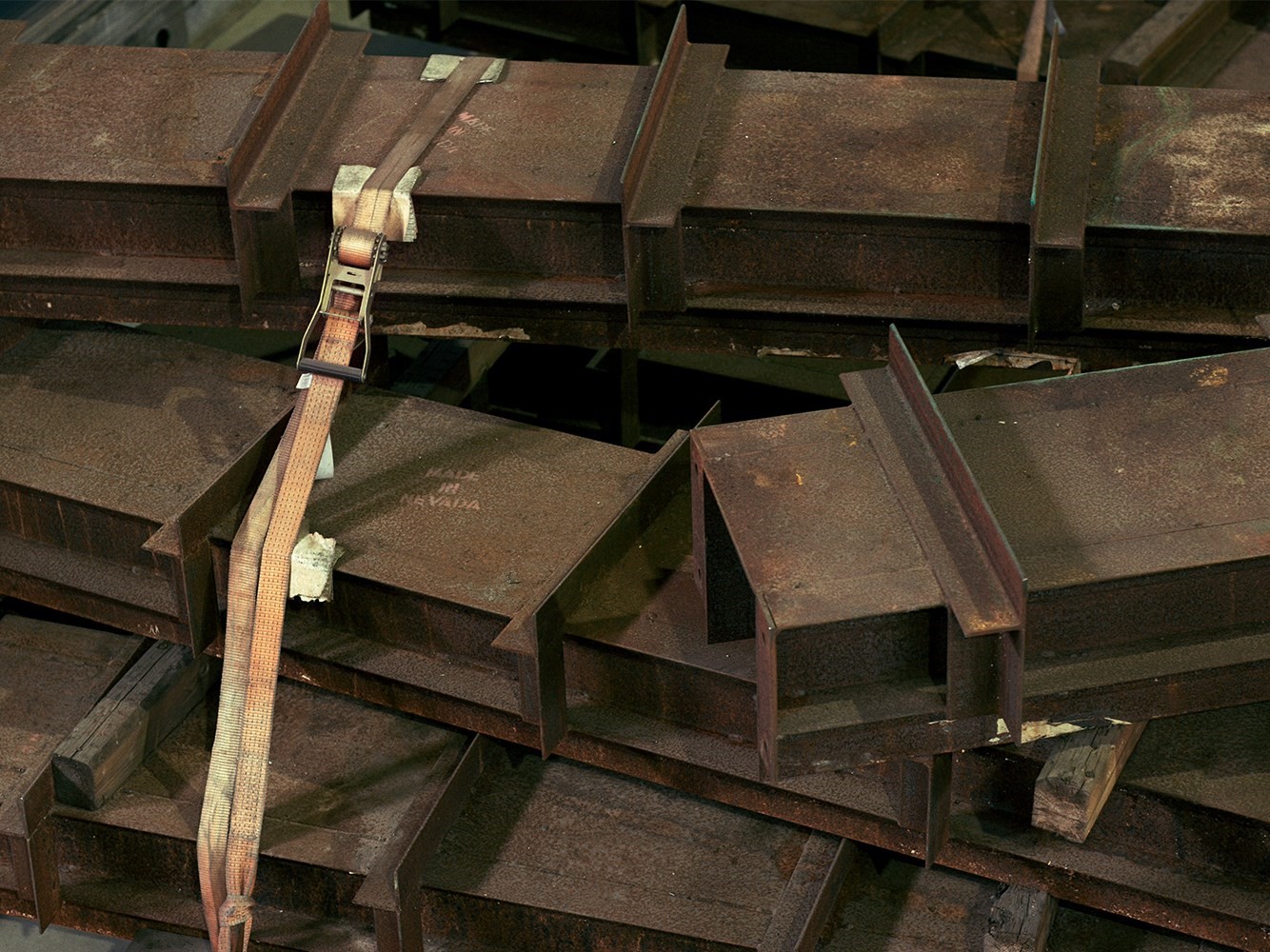
I was wondering if you could talk about how your relationship with art started. You said it didn’t start in the 80s, it started later, so how did it start and how has it evolved over the years?
I can say what I’m interested in now! (Laughs)
Okay.
What I’m interested in are projects that in a way are entering our reality. That’s why I like the work of Francesco Vezzoli. We did a television project, and now we will rework the Kinsey Report by asking people about their sexual behaviour. And Carsten Höller wants to do this Prada Congo Bar... so basically, these projects are examples of what I am searching for. So art can be political again and has a role in reality.
Okay, so the Congo Bar of Carsten Höller would be such an example of production of reality.
Yes.
It’s not representation, it’s not metaphor, it’s actually the production of reality.
Yes, that’s what interests me and artists that want to escape the art world. Let’s say it like this – there is something happening that escapes the control of everybody, but I think that something really important is happening now. So now I’m curious and I’m trying to document or enter into or analyse the fields that are creating movement.
That has to do also again with the connection to politics, no?
Yes, because politics is not in parliament any more, in parties. Who knows where it is? It could maybe be the internet, we don’t know where it is.
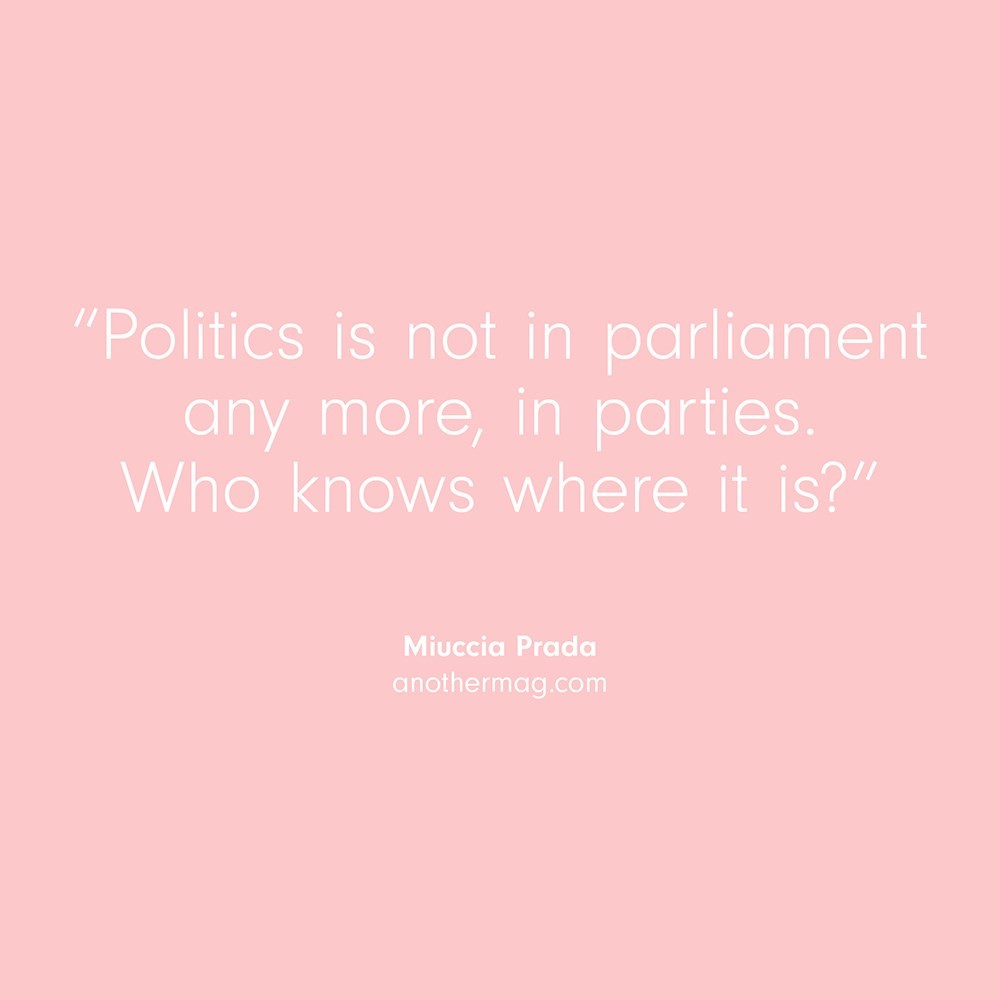
One of the things which I think is also interesting to talk more about is this production of reality and the fact that it can happen anywhere in the world, but still you have this Foundation here very locally.
This is actually something that happened by chance; maybe all these things that happen by chance will be relevant later. It’s a consequence of the fact that basically we had a big collection, and we had a place... this kind of auditorium like in a Kubrick movie. Like the room in Dr Strangelove.
Like the War Room in Dr Strangelove, built by Ken Adams. The auditorium leads us to the idea of a conversation. I participated in your La Sfida conference; you talked about your idea of a school, of founding a school. So that’s also something where you go beyond objects, because you’re interested in this idea of producing knowledge. And that might be another interesting dimension to you that maybe is less known.
It’s the reason for my work. It’s the reason for art, but I would say they are all instruments. Someone once asked me, 'Why art? Why fashion?' and I said, 'Because they are my instruments.' If I were a doctor, I would use the available science. They are instruments of knowledge used to make ideas available. If there is no distribution in place, what’s the point? But that is another discussion.
I’ve been thinking a lot about feminism and power, and this whole idea of there being a pioneering generation of artists.The WACK! exhibition at the moment in PS1 is the first big survey of 60s and 70s feminist art practice. So I was wondering if within fashion you felt this idea of feminism is a sort of field in itself, or to what extent you feel it’s now more a context of postfeminism, or if it just was a question which didn’t really matter?
Let me think about it because it’s complicated. First of all, I think we are lacking the debates on feminism, but obviously, if there are no debates, it means that the question is not relevant at the moment for people, because when feminism was relevant, it was an urgent personal need for people. So when you are having a discussion for the sake of the discussion, it’s over. No one is interested. Although, I think it should be very interesting. I don’t know, probably it’s a thing that’s in the back of people’s minds, so it’s probably more about living experiences than even thinking about it as a 'subject' in itself.
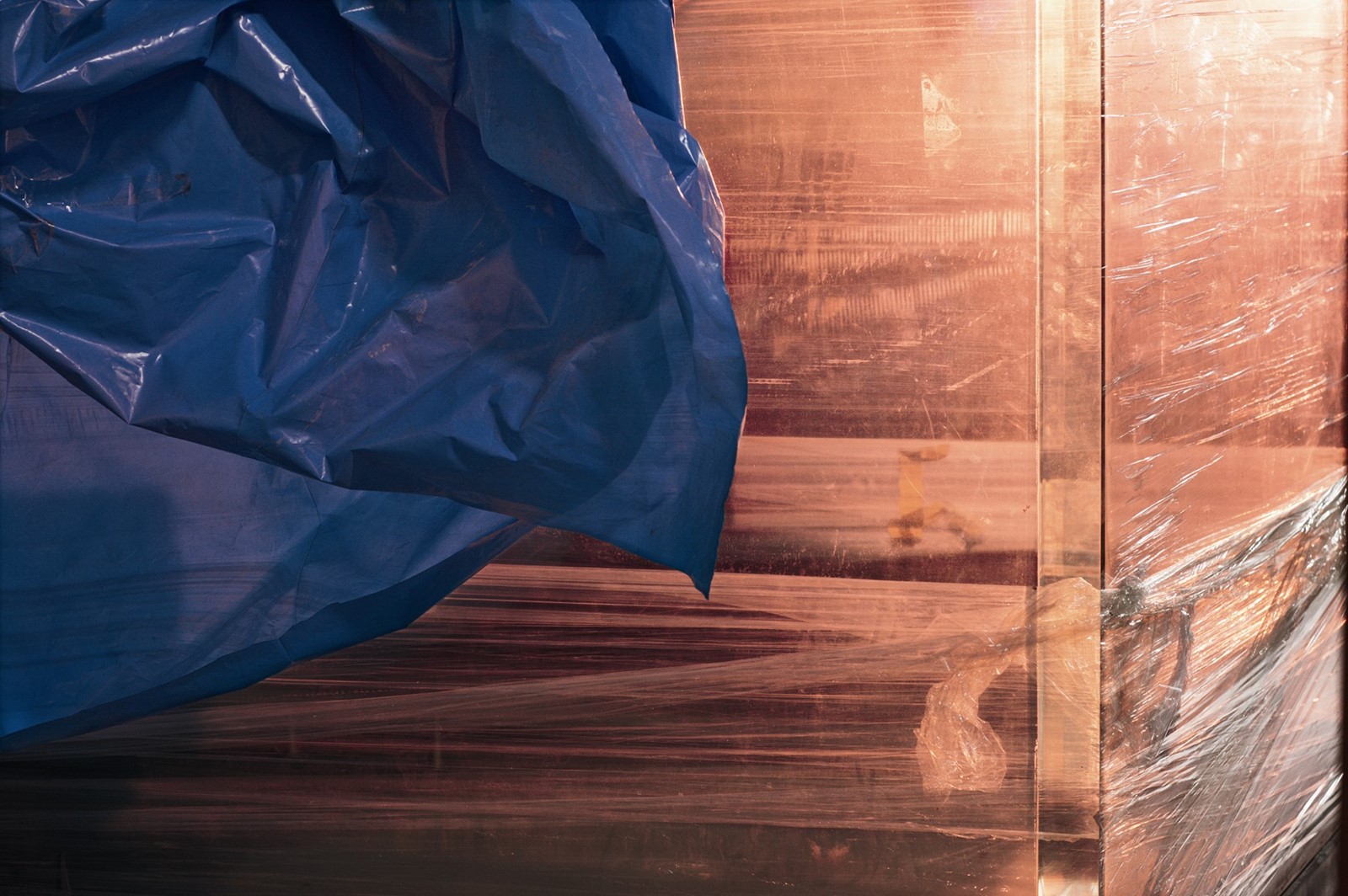
Is it, in your case and maybe in general, more implicit feminism rather than explicit feminism. It’s just doing it?
Yes, exactly, or going back, because I see my children and their friends and they live completely separately. Men and women in the younger generation are apparently very separate. They meet at night, but during the day, they are completely separate, so I don’t know (laughs), I can’t be an expert on everything!
So that leads us to the very last question. The poet Rainer Maria Rilke wrote this lovely small book of advice to a young poet. I was wondering, in terms of 2008, what would be your advice to a young fashion designer, or to any young designer, a young artist or young practitioner?
I will say study. When they ask me how I can be elegant, well dressed – I say study! (Laughs) Study fashion, study movies, study art and after that study yourself. Probably to understand what is happening and the rest of the work, is to try to understand the system of working. And you said that basically you have a system and yet you have no system, that’s also an interesting paradox. Yes, when I want to I can have a system or no system, so that is the phrase that comes to my mind at the end of the interview, ‘the system of working’.
